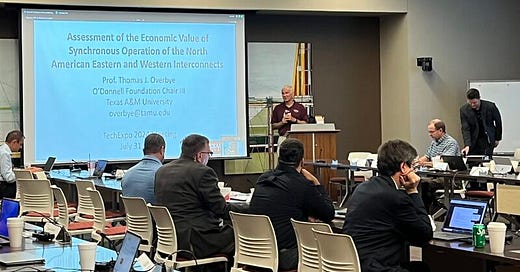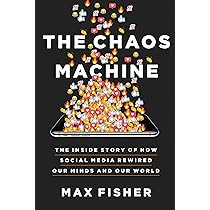People are nothing more than currency.
The monetization of manipulation and how to break free of it.
There is a book called ‘The Chaos Machine’, written by Max Fisher. The subtitle is ‘How Social Media Rewired Our World.’
The title sums it up, however in my opinion the subtitle pulls its punch and falls short. I’d rather it read ‘People as Currency; The Monetization of Manipulation.’
It is a frank expose on how social media came to be but it doesn’t really cover the why deeply enough (I think). And, that is what this article is about. The why.
And, the why not.
Why am I touting a book I didn’t write, was featured in or know the author?
Read on. You’ll see.
A long time ago, I was part of the actual launch of what became social as we know it.
Back then it was ‘online communities’. The term social media was just taking hold. Regardless, on one particular set of days, I was in an unassuming conference room where certain strategies were set in motion that ultimately had a massive ripple of unintended consequences that would reach forward with a choke hold from then to now.
I was there with the early teams who created some of the social platforms dead and gone like Friendster, Bebo and SixDegrees. And some which were rapidly on the rise then, including one we are way too familiar with today. However, some of the early online game publishers like Zynga were also present and play a role in the early explosion of social. However, Zynga wasn’t the company in the room during when this story takes place.
Looking back the early times and technology was crude. But a necessary evolution leading us to today’s standards.
Back then the Flip camera allowed for immediate content creation and upload to a platform (in the early 2000’s it was a lot harder than it is now). It relatively inexpensive, was highly portable and easy to use (for that time).
I was there when much of this shit started. I was a supporting actor, an extra really. But I was there. We were making it up as we went along. With zero thought about the ultimate outcome.
On a beautiful sunny day in the early 2000’s, I recall having just left Flip’s second floor office (over a store in downtown San Francisco) where I had been looking at a new version of the camera before launch and trying to figure out how to use SPI to identify influencers to tout the product (yes, they existed back then too).
I got a call on my Startec Motorola phone (it was THE thing at the time), indicating the CMO was jumping to something called Pandora. Streaming music. i-Pod killer. These early concepts seemed foreign based on what we knew. Streaming music versus music on a drive, downloaded from the cloud but not managed in the cloud. Hmm.
Back then, I was part of the industry team responsible for putting together the original Safe Harbor guidance that our trade organization, WOMMA (Word of Mouth Marketing Association, which is now part of the AMA, American Marketing Association) put together for the Federal Communications Commission. However, in the scheme of things, this didn’t really effect much. However, some of the early work we did with COPA (Child Online Protection Act) did matter and I am really glad it was put in place when it was.
The firm I co-owned at the time helped bring the very first listening engine to life (yes, there are such things). I created a tool called SPI (Social Performance Index).
Today, the name is not lost on me. SPI. Back then, we thought it was clever for the exact same reasons. SPI basically calculated the equivalent of a credit score for a digital user’s influence value. It was integrated into lots of things early on.
So that is the set up.
It’s always been about engagement and it always will be. It doesn’t matter where. Online. Off. Stores. Even a comedy show or a sit com feeds off engagement. The ‘stickiness’ of something allows you time to influence someone. This is their ‘dwell time’. Or as is often the case, manipulate them.
The business models for a lot of this was part art and part science. I can recall sitting in a meeting near Santa Clara, California that included a game publisher, a team from a very large tech firm, a rock-star digital agency talking about launching a new MMOLG (Massive Multiplayer Online Game) and integrating the ‘on-ramp’ for the game from this social platform.
Up on the walls were the personas of all the target users and their ‘buying agendas’. Also on the walls were examples of our ideal user’s ‘digital halo’ (their fingerprints, harvested from the listening engines and digital tracking mechanisms, which became standardized as cookies).
Sitting at the head of the large, square block of tables were a team of 3 cognitive psychologists and social anthropologists. They were there to instruct us on how to wire the first algorithms in order to get what we wanted.
Traffic? Conversion? Not really. Committed (addicted) users and their money.
“For your audience, cultural extremes work best (young males). Maslow’s Hierarchy of Needs. Specifically, belonging, esteem, and self-actualization. We can use this model in broader ways than originally intended. We can shape and manipulate behavior based on desire, reward and power. To achieve something over someone else. To be the best. To let others know they are lesser.
Our users need to the need to realize their full potential and achieve peak experiences. By giving them game levels, interaction with others, predatory tools and leaderboard scoring we can encourage online game time which will allow them the illusion they can achieve apex user (he really meant predator) status. The academic speaking continued. “There is not just one apex user . The game and its social interaction would be limited if that were the case.
With an unusual degree of enthusiasm, the academic continued, “It means we can allow for the establishment of groups or rather more specifically…‘clans’…and these individuals can vie to become the best of that clan, and then seek to do the same within a series of larger clans or perhaps smaller, more specialized ones, and so on. Not achieving a superior status at these new levels will extend game play.
A gaming team member spoke up, “and we can charge for all of that. Micro charges they won’t even recognize or care about because they don’t want to loose or be ejected from the experience. Those charges add up too. Big time.”
Then someone said aloud what everyone was thinking, “it all sounds that it is maybe…a little addictive?”
With a broad smile the head academic, leaned back in his chair, lacing his fingers over his ample belly, saying only, “quite.”
Another engineer, this one from the social platform popped the silence now hanging in room. It seemed like what had just transpired was kind of important. But no one knew why really and the moment passed. No one had a true inkling of what was happening.
Keep in mind, the collective belief was that this was just another software brainstorming session. Like it always is, everything was limited to the digital realm and the ripple effects were theoretical, at best.
In this type of cause and effect, if you don’t see the effect, does it really happen?
“We can architect the right content and display frequencies which are tailored to this audience. We will get better the more they interact with our various forms of content…our game on-ramps. Pretty quickly the system will figure out what is working and will double down on that.” He continued,
“We believe that if the player completes the free trial and logs at least 5 hours of play over at least 4 sessions, we have them.”
One of the social guys spoke up? “Ok great. Do we get a cut of that revenue? And, who owns that customer? How else do we monetize this? Who pays for the ads?
An agency guy steps in. “We’ve already got a tentative commitment from (name withheld), a gaming PC company with a brand new seriously over-clocked set up that will give players an advantage (look up over-clocked PC gaming rigs if you want). I worked with those guys too on that system and how we got those ‘rigs’ in the hands of a growing body of rabid gamers.
Then something happened. One of the younger female agency people asked a question. “Isn’t this, um…manipulation?” Her bosses winced. You could literally feel their cringe. Don’t say that shit. Money is at stake.
The senior social executive in the room, who smelled users and ad dollars shot back,
“well of course it is. Manipulation is money and users are currency.”
There was more to what happened in that room in Silicon Valley that day, but you get the idea.
And, this is just one of thousands of such meetings that happened across these early years which were nothing but chum in the digital water. It made money, and money attracts.
Fast forward to today. I work largely in data and to some degree, have most of my career. Today it is in Decision Science. You can learn more here if it interests you. If not, it’s a branch of AI.
And yes, to answer the question you are asking. I am seeing some of the same early warning signs as I saw in that room those decades ago. And yes, some of us are working avoid the same thing as what happened in social. In my opinion, we must not make the same or similar mistakes. We shall see what happens though. Look for a future article on this.
That is not the focus of today’s article though.
So let’s move on.
I was having a conversation the other day with a colleague on decision making. Mind you, she is an expert on the topic. She far outguns me with several Ph.D.’s in NeuroAI, Computational Cognitive Science, Computational Sematics, Learnability Theory, Information-Theoretic Treatment of Natural Language and Sensory Processing. My 13 IoT and Decision Science patents pale in silly comparison. But, she is kind and gentle with her intellect. And fun to talk to.
The Chaos Machine book came up in the context of AI Governance, and she made an interesting comment about the evolution-or in her words, the recent ‘mutation’ of social. She indicated that much of the content across most social channels falls into a couple buckets which include several helpful and benign categories including information sharing (how to), and opinion sharing (point of view/reviews), etc.
However there are an equal number of cancerous categories. Curated content designed to make others feel smaller or lesser in order for the publisher to feel stronger or more superior. Or worse, the antagonistic content which in a way is a more distilled version of the other one. However, in this case it is designed to polarize and divide, and when it does, it is designed also to recruit or manipulate. In the middle is social commerce which is rife with inaccuracies. Often, pure snake oil.
But why is this? Why the mutation? The organism (the social platforms) respond to stimulus and reward. Then tailor the evolution or mutation to get more of that. Users, user data, time on site (dwell time) and money.

Worse she said, is that our responses, habits, perceptions and expectation of the cancerous digital content and the underlying algorithms have begun to mature in us outside of the digital realm. She means its spread offline (or really, the barrier between on and offline is evaporating or gone).
These online habits and perceptions, courtesy of the ever present digital devices we cling to, have rewired our brains and perceptions. So perhaps the book’s subtitle is best. Max, I stand corrected.
“The signs are already here Steve, hidden in plain sight for us to ignore. Depression. Anxiety. Addiction. Rage driven events. Suicide. Social polarization. Peer manipulation and minimization (bullying). Narcism. Conspicuous consumption. Hyper-comparison. This happens when you spend 30-40% of your waking hours glued to your phone. I could go on.”
“No”, I said. “No need. I get it. But, in your opinion, are we past the tipping point? I asked. She paused and said, “no, I don’t think so, but it depends. Plus, it’s just my opinion.”
“Depends on what?”, I asked.
“If we can find joy, meaning and purpose within ourselves and within the analog world we actually live in. You know, Maslow’s Hierarchy of Needs.”
Interestingly, she is a big believer in philosophy and believes part of the problem is a lack of thought about purpose and service. Tenants of philosophy and more specifically Stoicism. She also likes this SubStack. For good reason, of course.
I found her evocation of Maslow a bit startling, because 20 years ago, his list was sourced by another academic who put it to use in a very different way and for virtually opposite outcomes.
I often wonder what Maslow would have thought of all this.
So this is where this story ends. However there is an epilogue. The best is always saved for last. C’mon, you know that.
What follows is how to jam what is fouling the gears of our social collective and individual well being. Short circuit our digital cancers. It’s simple. You already know the answer.
Log off. Build new habits. Slowly. Baby steps but be consistent.
Instead of doom scrolling, reach for a journal. Write something. Anything. Five sentences. Draw something. Do it for a minute. That’s it.. Doodle. Go back and read something you wrote earlier and make notes in the margins for what you are going to write next. Read ‘The Atlantic.’ Follow a philosophy podcast like ‘Daily Stoic’ or subscribe to a newsletter.
Maybe make a practice of once a week, texting a friend out of the blue. Here is one I did just the other day:
“Good running into you the other day Chris. Since my accident, I reflect often on people who intersect my life.
It’s not the quantity of time spent but instead the fidelity of the person. Although our paths do not cross all that frequently, I always leave you feeling better than before.
You are a high fidelity person who radiates great energy. You make the world you walk through just a little bit better, and that is enough.
Just wanted you to know that.”
Try more meditation, compassion and gratitude. Be more present. Experience nature. Truly sense what surrounds you that you can see and seek to see and understand the things you can’t. Appreciate both.
Follow Marcus Aurelius’ advice and skip the third thing. He writes about the third thing” this way:
“Because you’re not content enough with the doing. “When you’ve done well and another has benefited by it,” he writes, “why like a fool do you look for a third thing on top—credit for the good deed or a favor in return?”
Does the third thing sound like a social post?
If enough of us remember how to do these simple habits and enough of us stick with them, I believe that we can in fact, put the digital genie back in the bottle.








